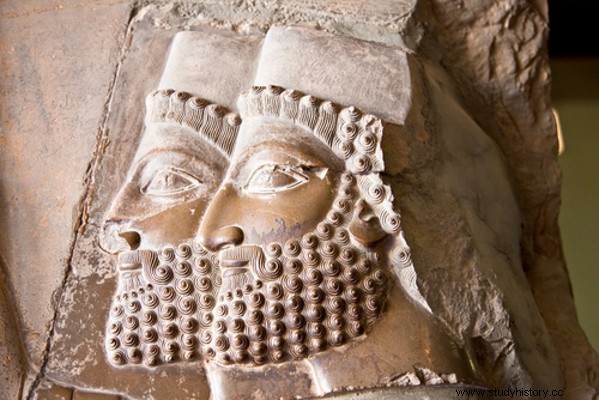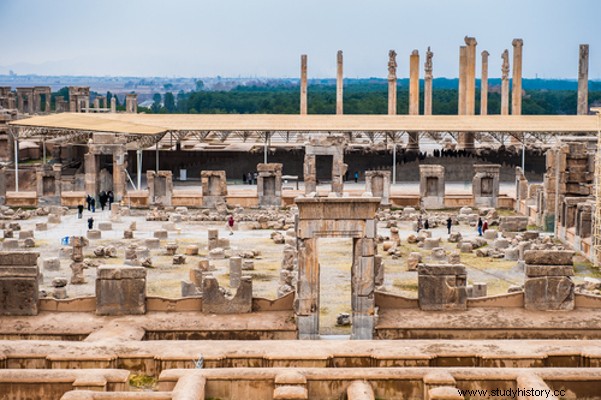
By Me. Cláudio Fernandes
The Persian Civilization flourished around 2000 BC, in the region of present-day Iranian plains. This flowering occurred together with other peoples, the Medes. Around 550 BC, Cyrus , the Great , the first Persian king to have great prominence, conquered the kingdom of Media and promoted the unification of the kingdoms of the two peoples, the Medes and the Persians. The empire that lasted about two hundred years began with Cyrus.
Cyrus spent more than twenty years in power, during which time he promoted the expansion of the Empire towards Asia Minor, conquering the region of Lydia and marching towards the Greek city-states situated in present-day Turkey. His domains also encompassed much of the Middle East, such as Phoenicia and Syria, which he annexed.
In 539 BC, Cyrus freed the Jews from the Babylonian captivity ordered by Nebuchadnezzar, allowing these people to return to their homeland. It was also with Cyrus that one of the most accentuated aspects of the Persian rulers began:a kind of “ecumenical and tolerant policy” that was characterized by respect for the cultures of the conquered peoples, without imposing beliefs or habits.
Cyrus' successor was his son Cambyses , who ruled from 529 to 522 BC. As Cambyses died without heirs, Darius I , with the support of Persian nobles, came to occupy the imperial throne after quelling an attempted usurpation. Darius was one of the most powerful emperors of antiquity. During his reign, the Persian empire went through an even greater splendor than at the time of Cyrus, mainly due to the great engineering constructions, among them, the roads that connected the main cities of the empire, such as Pasargadae, Susa and Persepolis.

Persepolis Ruins on the Iranian Plains
The main characteristic of the Persian administration was the satrapies , which consisted of provinces, of local bodies, whose governors, called satraps , they were responsible for taking care of the region according to the king's directions. In order for the satrapies to remain faithful to the central power, there were trusted officials of the emperor, known as “the eyes and ears of the king”, who were in charge of supervising the satraps.
In addition, the Persians, under Darius I, developed a sophisticated unified tax system, covering all satrapies, controlled from the currency created by that monarch, the daric.
The history of Persian civilization was also closely associated with that of the city-states Greek. It was against the Persians that the Greeks fought the famous Wars Greco-Persian or Wars Medical (which refer to the Medes people, as the Persians were known to the Greeks). From Darius I, through Xerxes, to Darius III (the last Persian king), that Persians and Greeks faced each other. It was always a Persian desire to conquer the region of Helades (as Ancient Greece was known). A battle from Salamin , which took place in 480 BC, was the most important of those fought between Greeks and Persians, given that the Athenian navy, led by Themistocles , achieved the great feat of stopping the advance of Xerxes' mighty army.
The last great Persian emperor, Darius III, also had the same ambition as his predecessors. However, Persian civilization was subjected to the greatest empire of antiquity before the Roman Empire:the empire that was founded by the heir of Greek culture, Alexander da Macedonia , also known as Alexander , O Big , who defeated Darius III and extended the dominions of his empire over the entire region of the ancient Persian empire.
Take the opportunity to check out our video lesson related to the subject:
